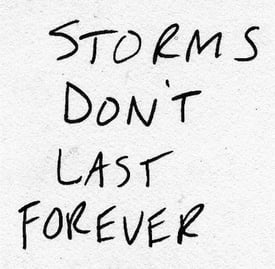 There’s no doubt that our customers and our own sales organisations are facing challenging – many would suggest unprecedented – times. Many purchases that would have seemed routine or inevitable are being deferred or cancelled.
There’s no doubt that our customers and our own sales organisations are facing challenging – many would suggest unprecedented – times. Many purchases that would have seemed routine or inevitable are being deferred or cancelled.
Many discretionary projects are being kicked into the long grass. If (as Gartner’s recent research has suggested) our customer’s confidence in their ability to make decisions was already a problem, it is surely even more of a challenge now.
The immediate crisis will inevitably pass at some hopefully not-too-distant point in the future.
But I suspect that it will leave a number of permanent changes in its wake. The increasing acceptance of remote as opposed to face-to-face selling is an obvious one, reinforced by the fact that the green agenda will continue to increase in importance long after covid-19 is brought under control.
But I also hope and believe that another outcome will be that salespeople and the sales organisations they represent will become much more adept at establishing their value in terms that are meaningful to their customers.
In fact, I’d go so far as to suggest that now is the perfect time to equip our salespeople with the skills they are going to need to establish distinctive value in every future customer interaction, whatever the medium of communication.
Focusing on the customer’s desired outcomes
That value can only be based on what our customers are seeking to fix, accomplish or avoid, rather than on any “value added” messages we might have invented to highlight our product or service capabilities. These capabilities are only ever important in the context of the customer’s goals.
And that in turn means that our salespeople are going to have to learn to do far more effective discovery. They are going to have to resist the “itch to pitch”. They are going to have to invest in far more extensive diagnosis before they attempt to prescribe a solution. And today’s inevitably extended buying cycles (for most purchases) give them a perfect window of opportunity to develop these habits.
By focusing on the value of the customer’s problem or opportunity, our salespeople may even help their prospects to recognise the value – notwithstanding the current climate – of targeted, effective change and in doing so elevate the current priority and perceived urgency of the project they are working on.
Goals, obstacles and impact
The customer’s value story starts with four key elements: their current situation, their goals, the obstacles that are holding them back and the impact of failing to deal with them. Together, these elements help them to answer the questions “why do we need to change?” and “why is change urgent?”
Goals are about the things the customer recognises they need to fix, accomplish or avoid. Our salespeople must also have the knowledge and confidence to introduce new threats and opportunities that the customer may not have considered or had previously undervalued.
Obstacles are about the factors that have prevented or could prevent the customer from achieving these goals. Some of these obstacles are likely to be well-known to the customer. A knowledgeable and consultative salesperson can share their experience of other factors the customer may not have considered.
Impact is about the costs and consequences to our customer of failing to achieve their goals. Once again, some of these impacts will be obvious, but there may be others that they might not include in their decision-making if our salesperson does not introduce them.
Sizing the customer’s value gap
Whenever the gap between our customer’s current situation and future goals is small, and whenever their obstacles are perceived to be insignificant, the customer is likely to continue on their current path.
But if the gap between their current situation and future goals is large and growing, if the obstacles are regarded as significant, and if the potential impact of failure is high, our prospective customer is far more likely to recognise the value of change, and to prioritise the project.
In both the current and future sales climate, I don’t believe that our salespeople should regard any opportunity as being properly qualified (and certainly not forecastable) unless they can articulate why their customer believes they need to change, and why they believe that change is urgent.
There is still obviously a place for nurturing the remaining opportunities, but let’s not allow our salespeople to get ahead of themselves and fool either themselves or their managers about the strength of the customer’s commitment to change.
The critical role of sales leadership
How can sales leaders help? We should be investing our time in giving our salespeople the skills and the confidence to have genuinely value creating conversations with their customers. We should seek to understand what our most effective salespeople are doing to create customer decision confidence and training and equipping the rest of the salesforce to emulate their behaviours.
We must use this opportunity to equip our salespeople with insights and anecdotes that can help to influence and shape their customer’s view of the world, and which help to position our salesforce as trusted experts capable of helping their customers navigate the complexities of decision-making and project justification in an uncertain world.
We need to give them tools and frameworks to guide them in having value-creating conversations and in co-developing customer-specific value stories with their key customer sponsors. We need to equip our customer champions to convince their colleagues of the need for change.
And above all, we need to take the opportunity to sell the value of change before we attempt to sell the value of our solution.
This article was originally published in Top Sales World Magazine.



